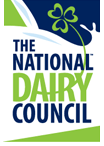Emerald Isle
May 18, 2012
This
past week my classmates and I actually traveled to Ireland to
experience the country we had been studying and researching for the
semester. I think I can
speak for the group when I say it was one of the best trips we had ever
experienced. It's not hard to feel extremely fortunate when you get to
see a beautiful country with a lot of great people. On numerous
occasions I heard "we are so lucky" and "I can't believe we are here"--so, thank you to everyone that helped us get there.
When
I got home, the questions I got from everyone were the same--"what was
your favorite part?" I knew it was coming, but I still didn't have a
good answer because I loved all of it. Instead, I like to think of my
experiences to remember why I want to go back: the folklore and culture, the beautiful landscape, and the people.
The
first night we spent in Dublin we had dinner at the Brazen Head Pub.
The food was delicious, but it was also our first real taste of
Ireland's culture. Our storyteller gave us a look at Ireland's history
from the perspective of classic Irish folklore. As in many cultures,
folklore was used to explain what otherwise couldn't be explained. If
you respect the fairies, good things will come your way. That night, as
well as our time at Bunratty Castle, we were introduced to some songs
and instrumentation common to everyone in Ireland. Having performed and
studied various genres of music in the past, I would have to say that
what I heard in Ireland is my favorite. The pure joy and fun that they
are able to express in their music immediately makes you feel like you
have become a part of their livelihoods.
Musicians at the Brazen Head Pub
Medieval Performers
The landscapes found in Ireland were some of the most beautiful things I
have ever seen. We spent the week traveling all over the country and
it felt like we were seeing something different everyday. From day to
day, we saw the rolling hills patch-worked with fields in various shades
of green and then the mountainous areas near the coast. Of course,
there were sheep and cows everywhere. The Cliffs of Moher and the
Dingle Peninsula were my favorite places to see during the trip. If it
wasn't so windy and you could guarantee good weather like we
experienced, they would be the most relaxing places on earth.
Boyne River Valley
Cliffs of Moher
Dingle Peninsula
The people of Ireland are well-worth visiting, too. It was refreshing to
go into a pub and have people genuinely want to know how you are doing.
We may not be comfortable talking to strangers here, but they are. The
whole pub experience is nothing like anything I have experienced
here--they just know how to have a good time and make people feel
welcome.























